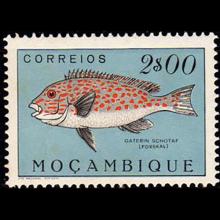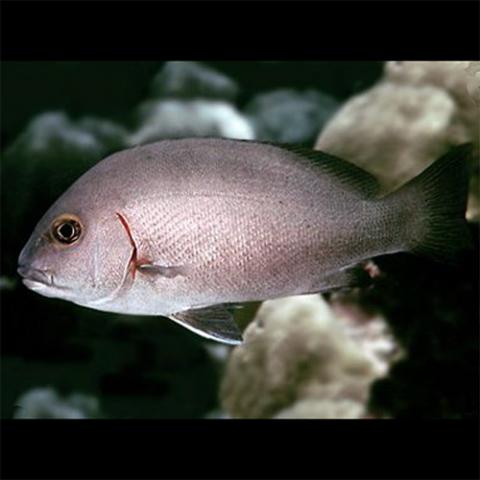NAMES
TAXONOMY
Mozambique
Issued:
Stamp:
Plectorhinchus schotaf
Mozambique
Issued:
Stamp:
Plectorhinchus schotaf
Mozambique
Issued:
Stamp:
Plectorhinchus schotaf
Genus species (Animalia): Plectorhinchus schotaf
Distribution
Plectorhinchus schotaf (Common name: Somber sweetlips) is found in Indo-West Pacific: eastern Africa south to Port St. Johns, South Africa and east to the western Pacific.
Biology
Found around rocks and corals from the surf zone to a depth of 80 meters. Enters estuaries and rivers in Seychelles, Madagascar and South Africa. Juveniles occur in tide pools.
Description and characteristics
The fish in this genus, Plectorhinchus, have big, fleshy lips and tend to live on coral reefs in the Indo-Pacific in small groups or pairs. They will often associate with other fishes of similar species; several species of sweetlips sometimes swim together. They are usually seen in clusters in nooks and crannies or under overhangs. At nightfall, they venture from their shelters to seek out their bottom-dwelling invertebrate prey, such as bristleworms, shrimps, and small crabs.
Sweetlips coloring and patterning changes throughout their lives. For example, Plectorhinchus polytaenia develops more stripes with age. Juvenile sweetlips generally look quite different from the adults, and often live solitary lives on shallower reef sections. Juveniles may be banded or spotted and are usually a completely different color from the adults of their species. Small juveniles have an undulating swimming pattern, possibly mimicking poisonous flatworms as a means of predator avoidance.
Reference: Fishbase.nhn.fr, World Register of Marine Species, iNaturalist
Synonym: Gaterin schotaf (Forsskål, 1775)
Photo: Yu-Ting Hung


